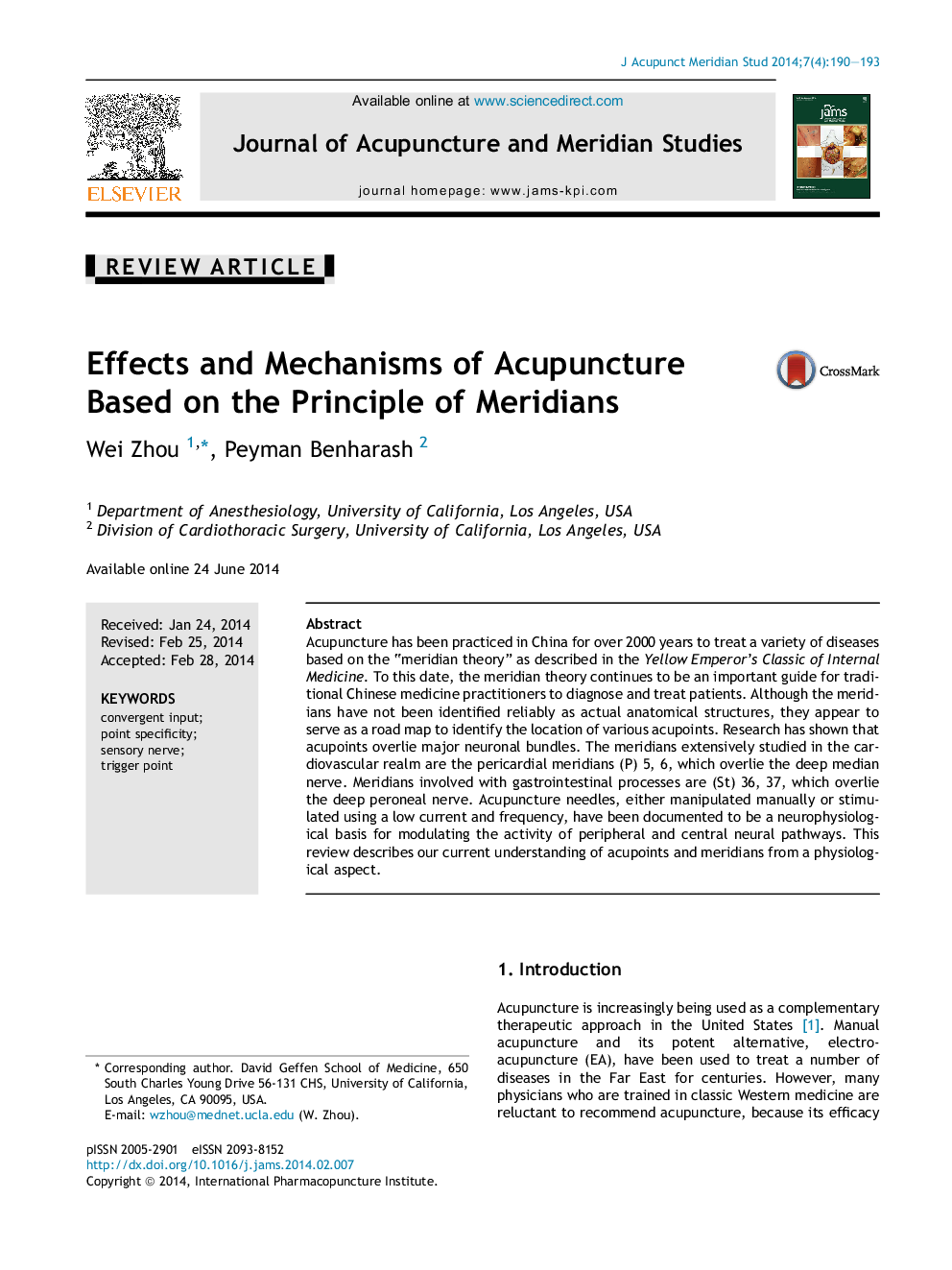| Article ID | Journal | Published Year | Pages | File Type |
|---|---|---|---|---|
| 3098524 | Journal of Acupuncture and Meridian Studies | 2014 | 4 Pages |
Acupuncture has been practiced in China for over 2000 years to treat a variety of diseases based on the “meridian theory” as described in the Yellow Emperor's Classic of Internal Medicine. To this date, the meridian theory continues to be an important guide for traditional Chinese medicine practitioners to diagnose and treat patients. Although the meridians have not been identified reliably as actual anatomical structures, they appear to serve as a road map to identify the location of various acupoints. Research has shown that acupoints overlie major neuronal bundles. The meridians extensively studied in the cardiovascular realm are the pericardial meridians (P) 5, 6, which overlie the deep median nerve. Meridians involved with gastrointestinal processes are (St) 36, 37, which overlie the deep peroneal nerve. Acupuncture needles, either manipulated manually or stimulated using a low current and frequency, have been documented to be a neurophysiological basis for modulating the activity of peripheral and central neural pathways. This review describes our current understanding of acupoints and meridians from a physiological aspect.
